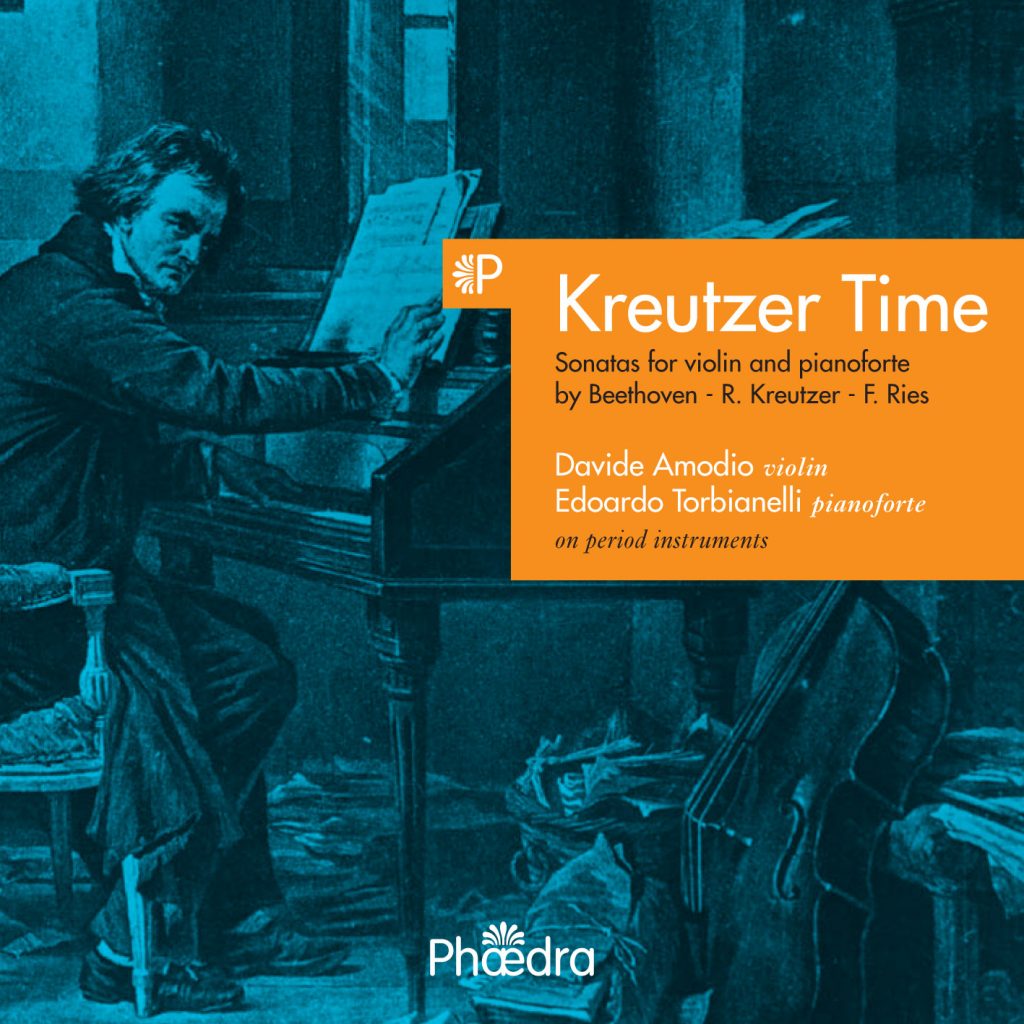
Kreutzer Time
Davide Amodio, violin (instrument by F. Pique, 1793; bow by Renzo Ghirardelli; gut strings by Charles Riché)
Edoardo Torbianelli, piano (Iakesh, 1823)
Beethoven, “Kreutzer Sonate”
R. Kreutzer, Sonate
F. Ries, Sonate
Ludwig van Beethoven’s Sonata op. 47, the Kreutzer, was performed for the ï¬rst time in the Augarten Theatre Vienna, at eight o’ clock in the morning on 24 May 1803. The composer himself played the piano, while the violinist was the extraordinary dedicatee of the sonata: George Augustus Polgreen Bridgetower, whom Beethoven called “Brischdauer” or simply “Bursch”. Is there really any need for yet another recording of the Kreutzer Sonata? Well, yes. Something new can be achieved and, anything but paradoxically, on old instruments. In fact the piano used for this recording was made in 1823 (and therefore only twenty years after the world première) and is a twin of the piano owned by Beethoven. Similarly, the violin is dated 1793 and has no shoulder pad or chin rest, while all the strings are made of gut (the ï¬rst three bare and the fourth hand-covered with silver wire); the bridge has a late 18th-century form and the bow is a copy of an exemplar from the same period kept in Mozart’s house in Salzburg. By adopting the technique and body posture as indicated by period performing techniques, the musicians only need to let themselves be guided by the instruments towards a deep understanding of the score, and thus grasp the great spirit of improvisation. This not only means adding or omitting notes, but also feeling your way round the movements of the ï¬ gurations as if they were living and mobile. Beethoven is known to have been a great improviser, and Bridgetower provided the ideal partner. Thus in this recording the performers did not attempt to reproduce the sounds of the morning concert on 24 May 1803, which would have been impossible even for the original musicians. Nor did they strive to recreate a kind of archaeological sense of authenticity: they gave a performance with a fresh spirit of improvisation.
